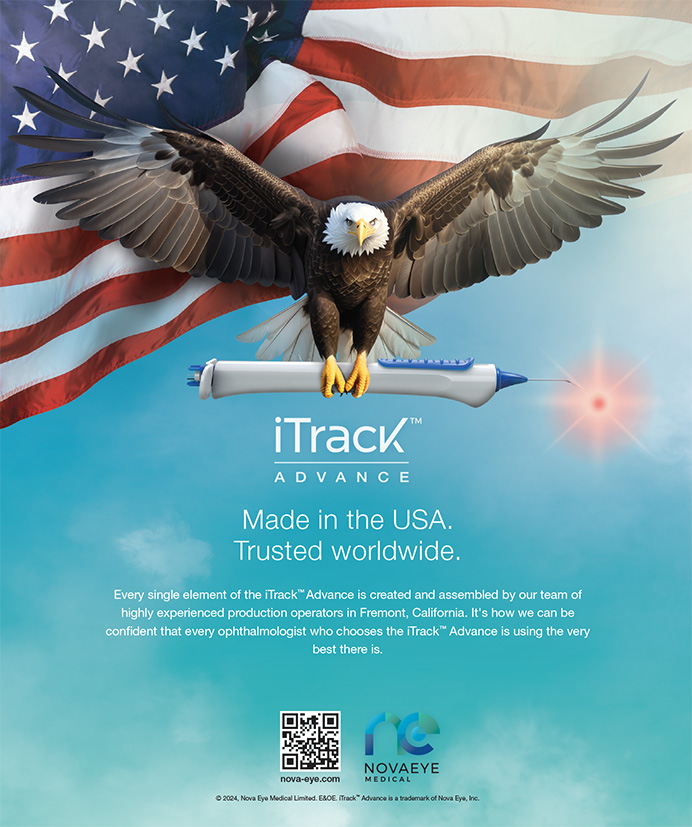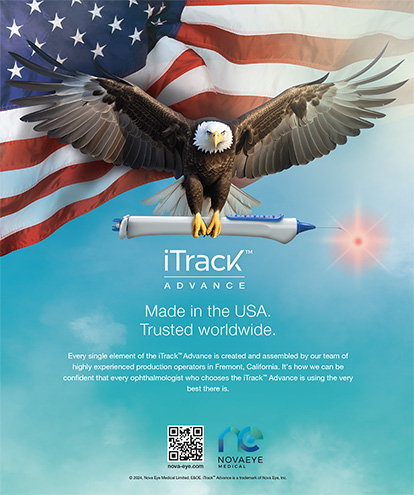Good news! While national LASIK volume continues to struggle when compared with years past, the surgical volume for cataract surgery and lens implantation is up. According to the most recent issue of MarketScope, cataract surgery in the fourth quarter of 2002 climbed 3% over that of the same period in 2001, and the numbers for the immediate future look very promising. Here's why.
It appears our parents were once again right when they told us, “You're not getting any younger.” The fastest growing segment of today's population is the 60- to 65-year-old age group, whose growth has risen nearly 6% from 2001. Also, growth projections for the current baby boomer crowd of 50- to 59-year-olds (34 million strong) indicate similar growth patterns in the coming years. So how do you position your practice to take advantage of the expected growth of this segment of the population? For most of you, it's easier than you think, especially if you've already been actively involved in promoting your LASIK practice.
More good news: marketing to the 65+ age demographic is much easier than trying to attract the younger, more aggressive, more active 30- to 55-year-old LASIK crowd. Seniors are more sedentary than the hard-charging LASIK population base. They spend more time viewing television and reading the newspaper and their mail. Obviously, this lifestyle makes seniors a much easier audience to target from a marketing point of view.
The decision to engage in marketing to seniors for cataract care is often based on whether or not you own the surgery center in which you practice. From a financial and time-management standpoint, it probably makes much more sense to perform cataract surgery in your own facility, but the variables involved make this choice a topic that is better discussed in a separate article.
The reasons for the resurgence in cataract marketing are probably the result of any or all of the following: decreased LASIK volume, which left surgeons more time to perform cataract surgery; decreased LASIK fees, which caused surgeons to find other sources to make up the difference in monthly revenue; new technology that has cataract surgeons excited about its potential; enhanced results from cataract surgery, making it a more attractive procedure to patients and surgeons alike; and an understanding of demographic trends that show a need for practices to position themselves to better serve this increasing segment of the population.
Regardless of the size or scope of your ophthalmic practice, the following step-by-step guide is designed to help you get the most out of your cataract practice in your specific market. When marketing to seniors, it is important to remember that they do not have the same research tools for information as the average LASIK patient. Seniors are virtually unaware of the developments in cataract care that have occurred within the past 5 years, so there is plenty of opportunity to educate them while promoting new technology and surgical techniques.
PATIENT EDUCATION
Seniors respond favorably to education and still welcome newsletters, physician letters, pamphlets, postcards, and virtually any other medium that focuses on breakthroughs in the care of their eyes. Therefore, it would be wise to communicate with seniors through educational updates. This is best accomplished with an invitation to visit the practice and attend a medical lecture, an educational seminar, or even an ice-cream social or brunch that is centered upon a guest speaker. Seniors love to be invited to events and have much more free time to attend them than do the general working segment of the population.
NAMING YOUR CATARACT PROCEDURE
Many practices have had tremendous success in naming their cataract procedure. In the past, such names as “Care-Free Cataract Care” or “Quick Vision Cataract Care” have been very well received by the public. These names focus on both the quick recovery of today's cataract procedures and the fact that they can now be performed without stitches or shots, using only topical anesthesia. Others have promoted the manufacturers' concepts, such as multifocal or silicon-free lenses. Some practices have associated their physician's name with their cataract procedure as well. Before you name your procedure, however, make sure you understand the FDA and FTC guidelines for promoting medical procedures. Assigning a false or misleading name (eg, “Instant Vision”) could violate established marketing guidelines.
DIRECT MAIL
The three most proven methods of direct mail targeted at seniors are physician letters, newsletters, and invitations.
Physician letters printed on practice stationary and letterhead have a much higher chance of getting opened than traditional direct-mail coupons or postcards. For the best effect, hire a direct-mail firm that can actually print addresses on envelopes rather than using a standard address label. This technique gives the recipient the impression that the mail is being sent strictly to him. Also, hire a firm that can customize the salutation of each letter with your practice's name and address.
Properly designed newsletters with an educational theme also work very well with seniors. Newsletters should have a masthead explaining the content of the newsletter (eg, “Senior Cataract Report” or “Senior Eye Care Update”). Make front-page articles relevant to recent updates in cataract care (lens technology, surgical techniques, etc.) and reserve the back page for events and special offers. Always make complimentary screenings available and promote a monthly special event. When designing your direct mailing, keep with the standard invitational theme. Include an RSVP card; use an envelope and card insert that resembles a wedding or anniversary invitation. Keep the message simple, include complimentary beverages and light snacks, and give at least 2 weeks advance notice.
TELEVISION AND RADIO
For practices that can afford it, television is a viable medium for a cataract campaign. Some of the most affordable times in television include the 9 AM to 4 PM hours; female viewers and people of retirement age dominate viewership at this time of day. If you're going to use television as a medium and want to generate a response from your campaign, state a specific offer during the commercial. Many practices spend too much of their TV commercial educating the public and not enough time with their offer or call to action. One of our most successful cataract campaigns for television has been to promote free offers for pamphlets entitled “Breakthroughs In Cataract Care” and “The Senior's Guide To Cataract Care.” Whatever your message, understand that most seniors calling your practice already see an eye care professional. Your job will be to properly direct them in their search for cataract care and to remind them that you will return them to their “regular” eye care physician after their procedure.
Radio is simply not the best medium for cataract marketing. Most 65- to 75-year-olds don't spend as much time in their cars as the working generation does, and, unlike in the past, most do not sit around the table at home listening to the radio. If there are stations in your area that cater to seniors, then your chances for success are better than with average stations, whose listening audiences are much younger and not likely to respond to senior-related messages.
FINANCING
Unlike LASIK patients, most seniors do not normally require financing for their cataract procedure unless they are too young to qualify for Medicare coverage. Nevertheless, be sure to offer affordable options that allow patients to finance their procedures. The most attractive finance plans now allow patients to pay for their procedures interest-free for up to 18 months. Other popular plans allow no-money-down and no payments for up to 6 months.
As a way of keeping your receivables in line, innovative companies like CareCredit (Anaheim, CA) and Vision Fee Plan (Southborough, MA) are working with cataract practices to develop a program that will allow seniors to finance their outstanding balances. According to Tony Seymour, National Sales Manager for CareCredit, the average accounts receivable for a practice is between $200 and $900, and most practices don't realize they can use patient financing to help reduce their accounts receivable.
?In the past, the average practice lost 15% to 20% of the receivables they carried, which we're now helping them recover with our unique partnering program,? says Mr. Seymour. ?The practice simply sends a letter out instructing patients they are partnering with CareCredit to provide an easy way of paying off their remaining balance. We typically offer them 3 months without interest. It only costs the practice 5%, and patients can apply online, at home, or in the office.? For interested practices, CareCredit offers an online resource center at www.carecredit.com with letters already written.
There is as much fun and exciting information to promote in the field of cataract surgery as there is in refractive surgery. Remember, no one monitors the industry like we do, so there is a world of information out there that seniors are waiting to discover. It's your job to deliver it!
Michael W. Malley's monthly column offers perspectives on effective marketing strategies for refractive surgery practices. Mr. Malley is founder of The Centre for Refractive Marketing in Houston. He holds no financial interest in any laser manufacturer. He may be reached at (713) 839-0202; mike@refractivemarketing.com.

